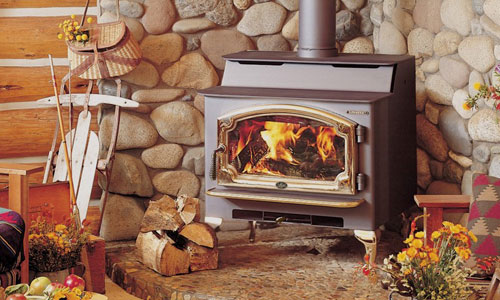Two years ago, I wrote about emergency home heat. In the article, I compared various options, mentioned my desire for both short-term, convenient and long-term, sustainable solutions, and decided on propane and wood, respectively.
Since then, I have moved, built a new home, and done even more research. While my conclusions have not changed generally, my overall plan has. For the most part, I no longer see the need for two solutions. In my mind, there is now a single, universal solution that is the most efficient, cost-effective, and sustainable.
Remember that the specific task was to identify a solution for heating one’s home. I still believe that propane is the best fuel for portability and convenience. I still have my Little Buddy heater and several backup tanks. I even plan on getting a few more tanks. This is a great solution for working in the garage, shed, or greenhouse in the winter. I don’t however, plan on using this to heat my home—even part of my home.
Being prepared isn’t something you do; it’s something you are. It should be a way of life. Those that are best prepared are those that will be able to continue their usual routine with little inconvenience or challenge.This is the reason the concept of emergency food storage makes me cringe. Freeze-dried meals with a thirty-year shelve life is better than having nothing at all and I applaud those that have at least put something like this away, but what happens when the crap hits the fan and you dig these boxes out of the dark, dusty corner they have been sitting in? How are you going to prepare it? What are you going to cook it on? What about appetite fatigue? What happens when it runs out?
The same applies to heat. What happens when you run out of fuel? What happens if your heater breaks? This happened to me. Last time I pulled my Little Buddy out, it wouldn’t light. What happens when you loose your job and simply can’t pay your utility bill? What if you could heat a few thousand square feet instead of only a few hundred? What if you could do it for less money? How would you like to wake up the morning after a night the power went out and not know it until you tried to turn a light on?
The answer is wood. The application is important though; a fireplace won’t work. The appliance you want is a wood burning stove. It’s nothing new; this is how homes have been heated for centuries. You’ll remember in my original article that I mentioned wood was a good, long-term, sustainable solution, but moved past it rather quickly. This was short-sided due to a desire to find a solution that would allow me to continue to run all my modern appliances and ignorance to the performance and cleanliness of modern stoves. I have since decided that a self-sustainable full source is more important that maintaining modern appliances. While a wood stove won’t fuel a water heater, oven, or kitchen range, it will heat my entire home and the model I’m purchasing has a step-top cook-top for radiant and convection cooking. Old wood burning stoves were inefficient, dangerous, and bad on the environment but a lot has changed in the past several years. The EPA limited smoke emissions in the late 1980’s to 7.5 grams per hour, but modern, certified stoves emit as little as 1.9 grams of particulates per hour. They even use substantially less wood.

I plan on purchasing the Liberty Stove by Lopi. It puts out 74,000 BTUs per hour and can heat up to 2,500 square feet radiantly and by means of it’s built in convection air-flow alone. I’m going to install it in my basement next to a canning kitchen. This will allow me to heat my home and use it for cooking, today, tomorrow, during the next storm, or one second after. Another thing that I am going to do as I finish my basement is install a cold-air return above the stove in the ceiling. This will allow me (at least when the power is on) to run just my furnace’s blower and distribute the heat throughout my house via the ductwork, efficiently heating the entire structure (4,000 square feet). It’s not as convenient as a gas fireplace, but without a blower, gas fireplaces are only artwork; they don’t heat. Wood stoves are a little more work, but at least they work under any condition.
I plan on documenting the construction of my chimney and installation of the stove and including that in a follow-up article this summer.


Have you looked at a masonry heater? They use a lot less wood and provide more consistent heat with less maintenance. They can be built with a bake oven, but a stove top is less common. Biggest drawback is cost and size. I am planning on building one for my home in the future.
Hi Wade,
Great article. I have planned on going the same route as you by putting a wood burning stove in my basement. Above the stove I’ll have a vent with a separate electric fan to blow hot air throughout the basement.
After some research I chose the Jotul Oslo stove. It will heat the 2,000 square feet of my basement very well and if I choose to blow air into the first floor will provide some good heat there as well. The Oslo has some options that I purchased that address some other needs. One is a stainless steel cook top insert. This is a machined surface that allows you to cook on the stove properly. Most stoves just have a flat surface, but you need a decent thermal sink to properly heat food and not burn it. The machined surface helps with this as well.
Another option I purchased is an electric forced air blower. This, combined with the rear heat shield provides a good flow of heated air out into your room. It is thermostat controlled and you can adjust the fan speed as well.
My parents have had this stove in their house in Tahoe for a number of years and it has heated their large home well. When it came time to purchase my own I looked at many brands and kept coming back to Jotul for their quality.
The stove and accessories have been sitting in my basement where they will be installed for about a year now. Once I save up enough to have the hearth, wall covering and pipe installed I’ll be set.
As to the hot water heater, one solution I looked at for a long time was using a stove with a water insert to heat water and run it back to the hot water heaters as a storage tank. As long as you have water pressure, this can be a good solution. Unfortunately, due to the set up of my basement, the distance from the stove to the water heaters, etc, I would also require an electric motor to push the water back into the water heaters.
I was looking at the Oval and Sweetheart stoves by Heartland for this. Each stove has an oven, cooking surface and warming area like the stoves that were common a hundred years ago. The cost is ultimately what made me choose the Jotul which was about half the price of the Heartland stoves once you factor in accessories.
If you are looking for true long term preparedness though this is probably a better route, but pricey.
Mike
Considered Geothermal Heat about 7 grand, but free forever after that. Grab some solar panels to power it and your upto 10 grand for free heat.
You mentioned not being able to heat a water heater. Growing up in the 80s my dad rigged up something that heated a water heater. I’m a “girl” so not very good at describing the technical side but will do what I can… We had a large stove… similar to pot-belly style but more of a rectangular cube. The stove was set up against the wall with the chimney, long side parallel to the wall. The rear of the stove had something rigged up to it with coils that water could go thru. (or maybe the water was just loose in the small box… this is where I would need to ask him for more info) The water tank was set up right next to it. A pipe went from the bottom of the tank into the extra box on stove and then up to the top part of the tank. It used natural flow (hot water rising, cold water dropping) for it to cycle through. We had a separate water tank that was run on electricity but would use the stove’s tank when the water was hot. It wasn’t well insulated so we could tell by touching it. Sometimes it was piping hot all the way to to bottom! We would rush to do tons of laundry and showers for everyone!